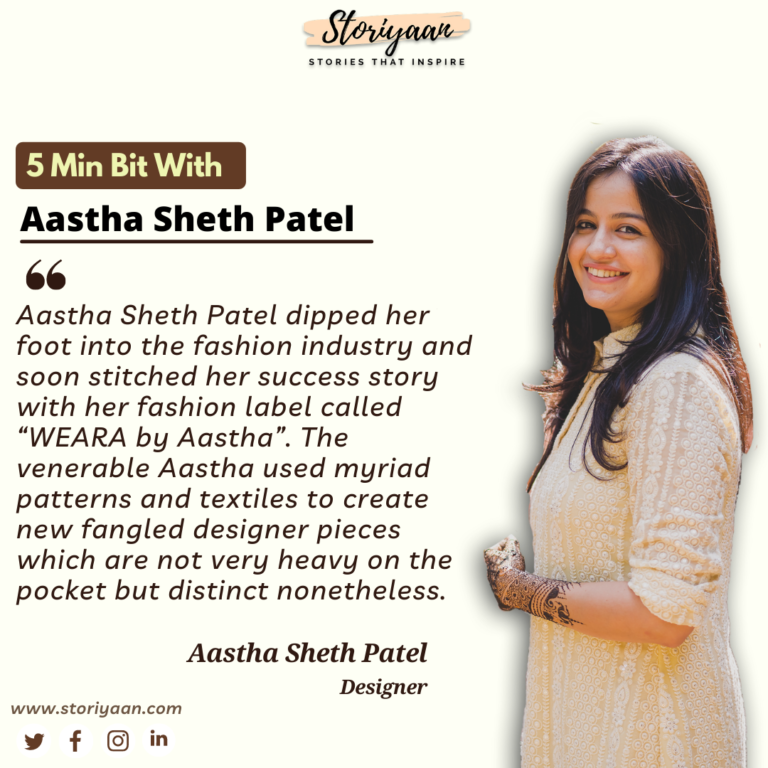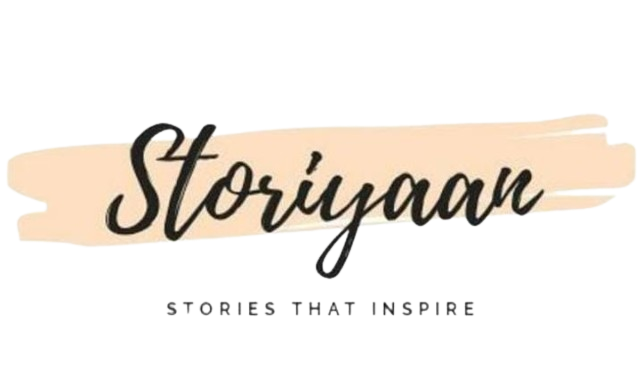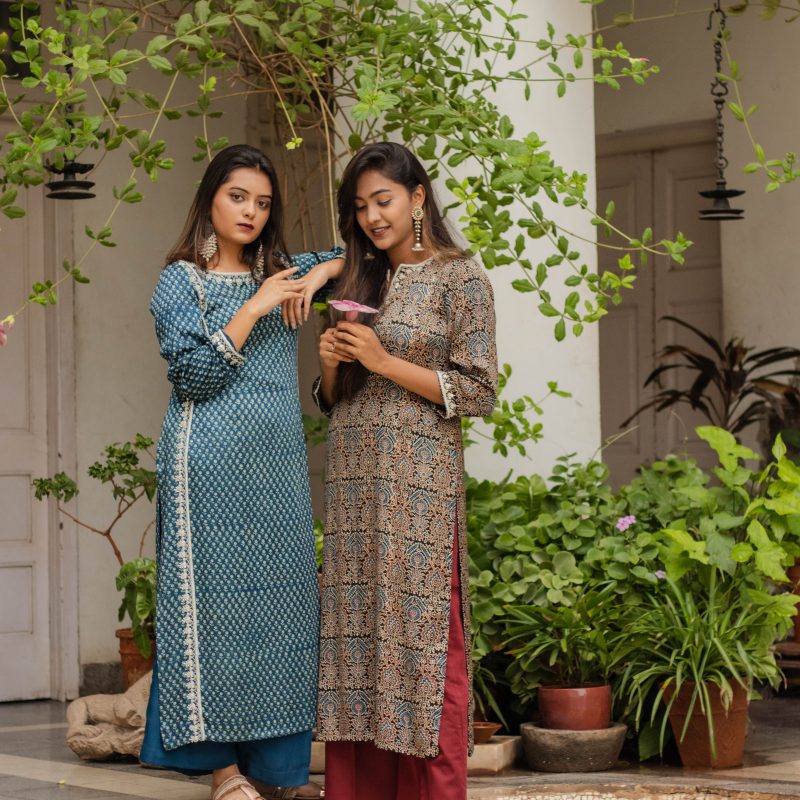Aastha Sheth Patel dipped her foot into the fashion industry and soon stitched her success story with her fashion label called “WEARA by Aastha”. The venerable Aastha used myriad patterns and textiles to create newfangled designer pieces which are not very heavy on the pocket but distinct nonetheless.
The competition and saturation of the fashion industry could not discourage her to pursue her dream of becoming a textile designer. Aastha consistently worked on fusing the tapestry of Indian cultural artwork and textiles with the beauty of western clothing. In her quest for empowering the obscure artisans, she has worked with SEWA (Self-Employed Women’s Association) and the famed Anita Dongre. Storiyaan decided to catch up with Aastha Sheth Patel to know more about her quintessential journey and self.

Interview
5 Min Bit With Aastha Sheth Patel
Questions and answers
You come from a family with a background in textiles. How did this background pave the way for your commencement into the industry?
My family background introduced me to the world of fabric and that shaped my interest. I feel my desire to pursue design or art has been perpetual because I have always been surrounded by textiles and art.
What are some of the major lessons acquired by you when you were working with Anita Dongre?
The experience of working with her has been indescribable; I learned dedication, resilience, and perseverance from her. She has been consistently working with the artisans at the grassroots level which is difficult yet she makes it look so effortless and easy!
Your aim for “WEARA” was to provide unique & quality indo-western pieces at a good price using different Indian textiles. What made you decide to opt for an amalgamation of the traditional & the occidental while sticking to your indigenous roots?
Since I am a textile designer; surface techniques, prints, and surface embellishments are my primary interests. I thought of using my textile knowledge and create garments using different textiles which will bring a fresh blend of the Indian culture of textiles in the typical western garments.
What was your strategy to incorporate the comfort factor even into semi-heavy ensembles so that it can be flaunted easily?
If you are comfortable, carrying off the garment is just second nature to you. My brand stands for light and comfort dressing so I worked on choosing the right fabric as it plays a huge role in the weight of clothing.
Can you tell us about the struggles that came your way when you were initially starting and what were the hurdles that you had to overcome to follow your passion & establish your studio?
Initially, it is difficult to find your voice and get heard in a competitive industry like fashion, you are taken for granted and your work goes unacknowledged but with persistence and support from my family, I stood like a rock and never gave up.
The fashion industry is ever-evolving and is the most dynamic field. What is your research methodology to remain up to date with all the recent fashion trends while also remaining relevant and realistic and keeping your designs practical for customer use?
We use various platforms, apps, and fashion weeks to keep a tap on the current trends and then we incorporate the trendy styles or elements into our garments according to the customer needs and requirements. Getting a vivid idea of the customer’s demand helps us to create a trendy yet practical designer piece for them.
What has been your mantra of remaining optimistic during the pandemic. How has the digital platform helped your business during this period?
My mantra is to be optimistic, take breaks if necessary, enjoy the little things in life and keep moving forward. Talking about going digital, it has helped us get to our customers when physical stores remained closed that helped us grow our reach beyond the physical limits.

